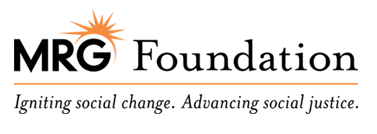Social justice groups may be special in many ways, but when it comes to websites, we’re mostly like everyone else (mostly, but not completely). We need effective websites like everyone else, but we often have less resources to spend on website development and don’t have the ability to contract with a web developer for ongoing maintenance. Luckily, there are still reliable low-cost options for us.
I’m working with quite a few grassroots social justice groups right now that are looking at website projects, and have a lot of ideas, but not a lot of money. So here’s a four-part series to help grassroots social justice groups without a lot of resources to get a website that works better for you.
The four parts are:
- Choosing Software (this post)
- Planning an Effective, Simple Navigation
- Design and Features
- How to Approach People to Work With You
Part One: Choosing Software, Choosing WordPress
My priority is that your group have a website that is easy to update with up-to-date content. Nothing says, “there’s nothing going on here” like a website with a home page that hasn’t been updated in three months or longer (I’m not naming names, but some of you know who you are).
I don’t care how many volunteers are offering to create a website for you and telling you that you can learn Dreamweaver. Just say no to any website that is not on an open-source content management system (CMS). No matter what this volunteer says, you will not learn HTML coding: you have events to organize, people to call and the world to change. Your site will become static and you will feel bad about it. Don’t feel bad if that’s where you’re at now: just switch to software that will make updating your site easier. Use an open-source content management system (CMS).
Idealware did a great comparison of the four leading open-source content management systems in use by the nonprofit community. If you have time/interest in a 60-page report, here’s a link to their excellent CMS comparison (updated this link in December, 2010 to latest version of report).
But if you are a group that needs to spend less money and wants something easy to maintain, I’m going to save you some time and tell you: Choose WordPress. Why?
WordPress is software created for bloggers. It assumes a certain willingness to learn basic web skills, but you don’t need to be a professional website developer to install or maintain it for a simple website. For groups that don’t have dedicated communications staff and a realistic budget for ongoing website development, WordPress can serve you well without a lot of money. Specifically:
- WordPress is easy to install and maintain. You’ll still need some expertise in-house, but you can maintain a WordPress site without extensive assistance from a skilled developer for software updates or feature additions.
- Its open-source design options and extensive feature list will meet your needs for quite a while.
- Its basic structure fits well with how you will want to present yourself (as I will explain further in Part Two of this series).
- You can take that time/money you’re not spending on development and use it on website planning. Please spend the time/money on planning your website.
MRG Grantees Already Using WordPress
Many MRG grantee groups similar to yours in size are already using WordPress. Here are a few of them:
- APANO
- Center for Intercultural Organizing (in 2015 became Unite Oregon)
- Friends of Family Farmers
- PCASC
- Voz Workers’ Rights Project
And of course, there are several million websites out there created in WordPress. You can see some of the nonprofits using WordPress in their online showcase.
Many of the showcase sites are much larger and more complex than what a small-budget grassroots social justice group needs. Remember, when you’re ready to grow, chances are you’ll be able to keep WordPress as your website software, and add a custom design and more features.
Creating a website in WordPress can be fast and affordable. Its ease of use offers a great opportunity to focus on how to present yourself to the community, rather than investing in more complex tools that require more knowledge and time than your group probably has in house. Like all tools, it takes skills to use well, but it’s made for people who want to focus on sharing their ideas with the world rather than learning code. In short, for your typical organizer.
Next in the series: Planning an Effective, Simple Website




